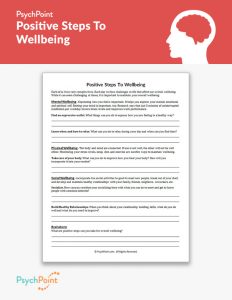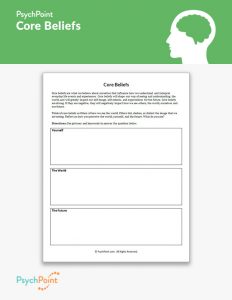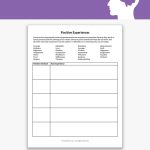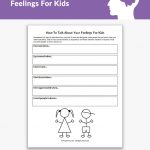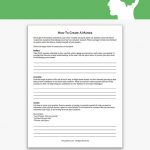Cognitive-Behavioral Model Worksheet
Worksheet updated on August 13th, 2024
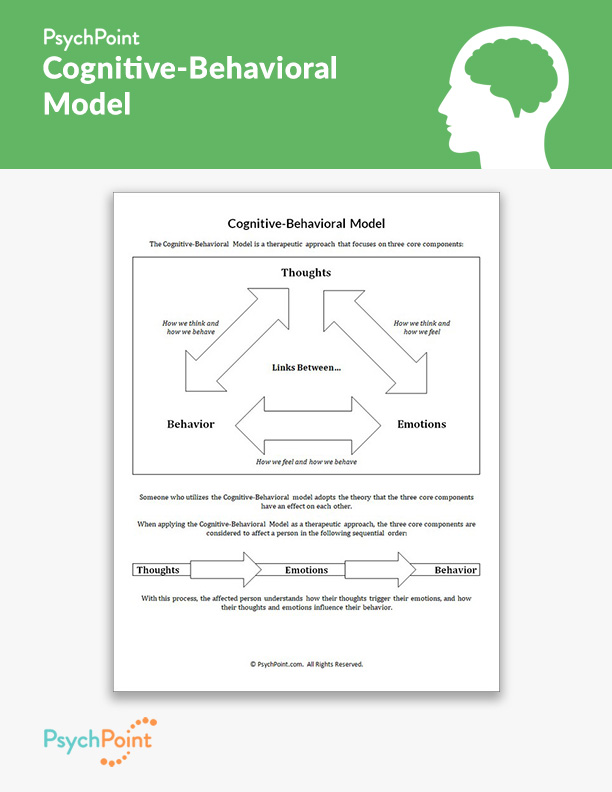
Cognitive behavioral therapy (CBT) has become a leading form of treatment that mental health professionals use when working with their clients. Part of the process of CBT is focusing on interaction between a client’s thoughts, feelings, and behaviors. A tool that is used to help explain how these three components affect a person’s mental health is the cognitive-behavioral model.
The cognitive-behavioral model is a triangle-shaped diagram that illustrates how thoughts, feelings, and behaviors can affect each other. It provides a display of the link between these 3 elements. It also serves as a model for explaining how CBT can be used in counseling.
About This Worksheet
When introducing CBT, explaining how thoughts, feelings, and behaviors can be modified to aid in recovery can help the client feel informed and confident in the process. Visual aids and simple exercises can be especially helpful when learning key CBT concepts.
The Cognitive-Behavioral Model worksheet offers a simple diagram of the cognitive triangle- a simple model that can be used when explaining the process of CBT. The worksheet also provides a brief explanation of how the cognitive-behavioral model is used to help clients develop a healthier perspective.
Adults participating in CBT can benefit from this worksheet. It can be used in individual and group counseling sessions.
Instructions
Use the Cognitive-Behavioral Model worksheet when introducing CBT to clients. Explain the cognitive triangle and how thoughts, feelings, and behaviors are used to build healthier perspectives on life challenges.
Help the client relate to the process and how it can help them by exploring their patterns of negative thoughts, feelings, and behaviors. Ask them about common negative thoughts they experience and demonstrate how those negative thoughts fit the cognitive-behavioral model. You may also ask the client what unwanted behaviors or recurring feelings they want to work on when using this process. This can start a dialog about the best methods for using the cognitive-behavioral model in therapy.


